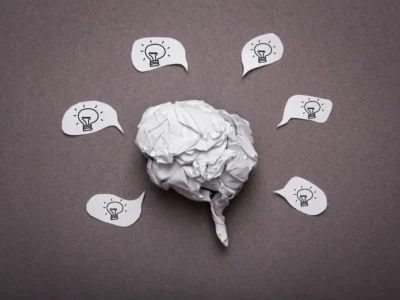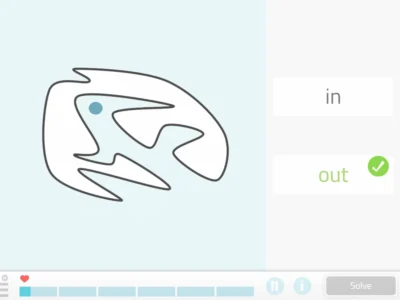Clinical psychologist Daniela Ramos Usuga explains in this article the process of rehabilitation of selective attention.
Attention is a complex cognitive function that has been addressed from different fields, from neuropsychology to cognitive neuroscience, including psychometrics and even electrophysiology. This has resulted in the development of multiple models that try to explain this ability from their particular perspective.
Thus, cognitive neuroscience, for example, attempts to determine the brain areas most involved in attentional processes, such as the prefrontal and sensory cortex, and subcortical structures such as the optic thalamus, the striatum (caudate and lentiform nuclei), the septal nuclei and Meynert’s nucleus, and the cerebellum1.
From neuropsychology, the model that has had the greatest relevance has been the clinical model of Sohlberg and Mateer2, which has been established based on the observation of the main attentional deficits found in people who have suffered a traumatic brain injury. From clinical observation, these authors have defined attention as a multidimensional capacity formed by five levels or types of attention, which are hierarchically interrelated. These levels include focused, sustained, selective, alternating and divided attention.
The following sections will address in more detail selective attention, what is meant by this type of attention, what problems people with impairments affecting its functioning face, as well as assessment and rehabilitation.
What is meant by selective attention?
It is the capacity to maintain a behavior that requires a motor and/or cognitive response without distractor or competing stimuli interfering with execution and outcome.
Based on the model of Sohlberg and Mateer2, and specifically the hierarchical relationship they establish among the different levels of attention, when performing activities that involve selective attention a minimum capacity to sustain attention is required beforehand. Let’s take a simple and very common example, reading the newspaper on the subway.
In this environment there are multiple distractor stimuli, both visual and auditory, such as the sound of the subway, the voice announcing the stop, people who talk and move, etc. To carry out an activity that requires concentration such as reading the newspaper and understanding what is read, it is necessary to sustain attention on the reading and, at the same time, inhibit the distractors.
A esto es a lo que llamamos atención selectiva, a la capacidad de seleccionar la información relevante a la que vamos a atender de manera sostenida. Por tal motivo, el funcionamiento adecuado de la atención sostenida es un prerrequisitoal correcto desempeño de la atención selectiva.

Subscribe
to our
Newsletter
What happens when selective attention is impaired?
The impairment of selective attention implies greater distractibility by irrelevant stimuli, or at least those that are not necessary to complete the required task. Such distractors can be external (e.g., noise, movements) or internal (e.g., thoughts, pain)2. Research on attention functioning in different pathologies has shown that it is especially affected in certain clinical populations.
Selective attention and depression
For example, people who have depression show a significantly low performance on selective attention tests since the rumination of thought, characteristic of these patients, represents an internal distractor that causes loss of vigilance.
Selective attention and schizophrenia
People with schizophrenia also present great difficulty in selecting relevant from irrelevant information, and, therefore, any strange stimulus is a candidate to capture their attention momentarily1,3.
Other disorders in which this function appears to be impaired are Alzheimer’s disease and Attention Deficit Hyperactivity Disorder (ADHD)3, 4.
These deficits not only prove to be a problem for carrying out people’s activities of daily living (e.g., inability to maintain the thread of a conversation without getting distracted) but also constitute a limitation in rehabilitation itself, especially when it is carried out in stimulating environments (e.g., going to the supermarket as part of occupational therapy)2.
Assessment of selective attention
Attention is one of the cognitive functions that cannot be missing in a neuropsychological evaluation, and that is why various instruments have been developed for this purpose. For the study of selective attention in particular, the most used tests are the d2 test, test of everyday attentionand the Stroop Color and Word Test.
d2 Test
Broadly speaking, it is a type of cancellation task in which the participant must cross out a target stimulus (the letter “d” with 2 marks) presented together with other distractor stimuli (letters “d” and “p” with 1, 3 or 4 marks),
Test of everyday attention
The test of everyday attention (TEA)6 for adults and the test of everyday attention for children (TEA-Ch)7 for children include ecological activities to assess sustained, divided, attentional control and alternating attention.
Regarding selective attention, one of the tasks in the adult version is presented as an elevator that each time it goes up a floor emits a different sound than the one emitted when it goes down. The participant’s task is to count how many times the elevator goes up one floor while inhibiting the distractor sounds8. Finally, the Stroop Color and Word Test9 is a very popular instrument used to measure cognitive inhibition, selective attention and processing speed. It is composed of three tests in which the participant has to:
Stroop Color and Word Test
It is a very popular instrument used to measure cognitive inhibition, selective attention and processing speed.
It consists of three tests in which the participant has to:
- Read as quickly as possible the names of three colors: blue, green and red (Stroop words),
- Name the color of the stimuli “XXXX” (Stroop colors),
- Name the ink color in which the color names are printed, inhibiting reading (Stroop word-color).
It is worth highlighting the need to carry out a complete assessment of attention, and not just each type individually.
On the other hand, in addition to psychometric assessment, ideally it is important to obtain qualitative data about attention functioning in environments outside the clinic. To do this, one can carry out interviews with both patients and family members, and determine in which aspects or situations the attentional deficit generates more disability. This information will be very useful when designing the intervention.
Rehabilitation of selective attention
As with other cognitive functions such as memory, when carrying out rehabilitation of selective attention it is necessary to set general and specific objectives based on the particular characteristics of each patient. Therefore, the intervention must be individual and designed to restore, maintain or improve the cognitive function, through guided practice organized by levels of difficulty. Once again, the functioning of the other types of attention should be taken into account to assess to what extent they should be included in the rehabilitation program.
For example, strengthening sustained attention can facilitate the restoration of selective attention. In addition, since the ultimate goal is to reduce the impact that attention deterioration has on the person’s life, the effectiveness of rehabilitation should be evaluated according to the improvements observed in their everyday functioning, and not only through results on neuropsychological tests.
Tools for rehabilitating selective attention
Another fundamental aspect to consider in rehabilitation is the selection of tools to use. Different tools can be used according to the patient’s needs (e.g., taking into account mobility), from classic pencil-and-paper tasks, such as word searches, to virtual reality. What is true is that the use of instruments based on activities of daily living is becoming increasingly common, since they offer a gain in ecological validity.
In this regard, the platform NeuronUP is developing a series of activities in which tasks created from everyday situations are included in which we engage our selective attention. Given that we are constantly exposed to a large number of stimuli in our daily lives, it is possible to capture a variety of everyday situations in games with a therapeutic objective.
However, to carry out this whole process it is first necessary to take into account a series of variables
- usefulness of the task,
- target population,
- modality of the stimuli (auditory, visual or both)
- design (color, size, movement etc),
- scores that are desired to be obtained (correct responses, types of errors, time etc)
- parameters that are to be controlled so that the activity is as structured as possible.
Likewise, it is necessary to have a theoretical model as a reference that justifies the approach of the rehabilitation program.
Ultimately, there is no doubt that clinical neuropsychology has evolved positively in a short time, and continues to develop more and more thanks to initiatives like these that represent a considerable advance in such an essential aspect as neuropsychological rehabilitation.
References:
- Rebollo, M. A., & Montiel, S.Atención y funciones ejecutivas. Revista de neurología. 2006;42(2):S3-S7.
- Sohlberg MM, Mateer CA. Improving Attention and Managing Attentional Problems. Annals of the New York Academy of Sciences. 2006;931(1):359–75.
- Egeland, J., Rund, B. R., Sundet, K., Landrø, N. I., Asbjørnsen, A., Lund, A., … & Hugdahl, K. Attention profile in schizophrenia compared with depression: differential effects of processing speed, selective attention and vigilance. Acta Psychiatrica Scandinavica. 2003;108(4):276-284.
- dos Santos Assef, E. C., Capovilla, A. G. S., & Capovilla, F. C.. Computerized Stroop test to assess selective attention in children with attention deficit hyperactivity disorder. The Spanish journal of psychology. 2007;10(1):33-40.
- Brickenkamp, R. (1962). Aufmerksamkeits-Belastungs-Test Handanweisung d-2.
- Robertson, I. H., Ward, T., Ridgeway, V., & Nimmo-Smith, I. (1994). The test of everyday attention (TEA). San Antonio, TX: Psychological Corporation.
- Manly, T., Anderson, V., Nimmo-Smith, I., Turner, A., Watson, P., &Robertson, I. H. The differential assessment of children’s attention: The Test of Everyday Attention for Children (TEA-Ch), normative sample and ADHD performance. Journal of Child Psychology and Psychiatry. 2001;42(08):1065-1081.
- Chan, R. C., Lai, M. K., & Robertson, I. H. Latent structure of the Test of Everyday Attention in a non-clinical Chinese sample. Archives of clinical neuropsychology. 2006;21(5):477-485.
- Golden, C. J. (1994). STROOP: Test de colores y palabras: Manual. TEA ediciones S.A.
If you liked this article about rehabilitation of selective attention you may also be interested in these posts:
“This article has been translated. Link to the original article in Spanish:”
Rehabilitación de la atención selectiva







 Executive function model based on factorial analysis
Executive function model based on factorial analysis
Leave a Reply